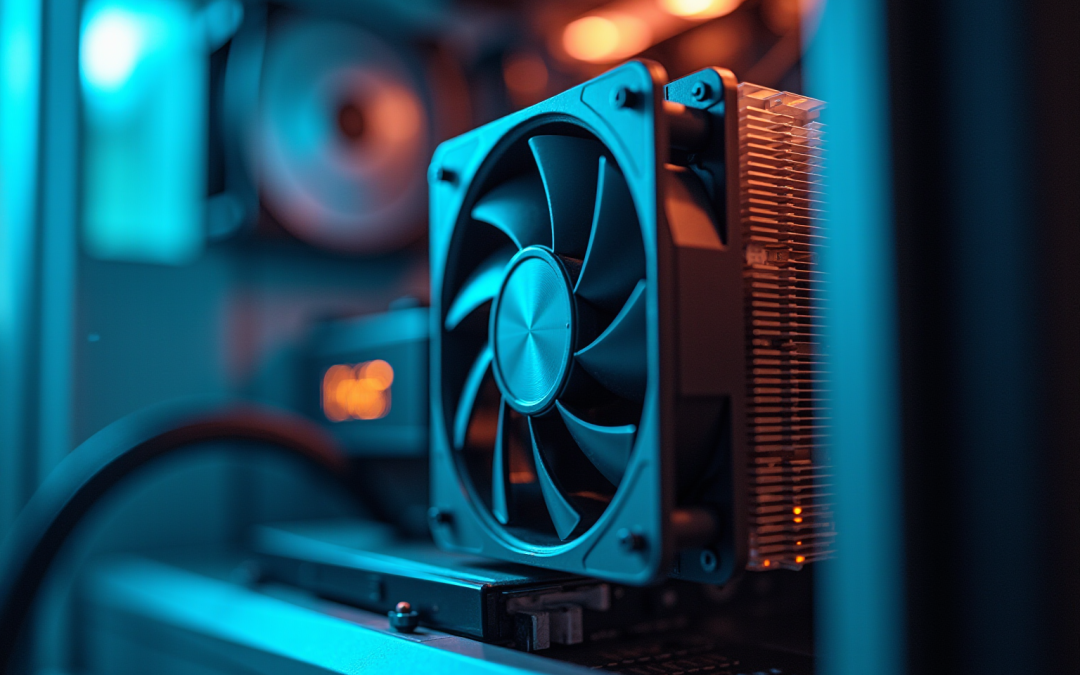Overview
Axial fans are pivotal in electronics engineering, efficiently moving air to regulate temperatures and prevent overheating of critical components such as CPUs and GPUs. Their significance spans various applications, where they enhance cooling efficiency and extend the lifespan of electronic devices. This is supported by evidence indicating optimal temperature ranges essential for device performance, underscoring the necessity of incorporating axial fans into electronic systems.
Introduction
Axial fans are crucial in ensuring efficient ventilation within the rapidly evolving field of electronics engineering. These mechanical devices are engineered to move air in a linear direction, making them indispensable for preventing overheating in critical components such as CPUs and GPUs. As the demand for high-performance electronics escalates, the need for effective thermal management solutions becomes increasingly urgent. Engineers face numerous challenges when integrating axial fans into modern electronic systems. Understanding their design and application can provide valuable insights to overcome these obstacles.
Define Axial Fans and Their Role in Ventilation
Axial blowers are mechanical devices specifically engineered to move air or gas parallel to their axis. These devices feature blades mounted on a rotating shaft, which generate a pressure difference that effectively draws air in and expels it in a linear direction. This design excels in scenarios requiring substantial air movement at low pressure, making the axial fan for ventilation a preferred choice in various ventilation systems, particularly within the field of electronics engineering. Their primary function is to ensure adequate airflow with an axial fan for ventilation, a critical factor in preventing overheating of circuit elements and maintaining optimal operating conditions.
The market for directional blowers is projected to grow significantly, expanding from USD 2.61 billion in 2023 to USD 3.93 billion by 2031. This growth underscores the increasing importance of these devices in regulating thermal dynamics within electronic systems. Experts assert that efficient cooling methods, such as an axial fan for ventilation, are vital for the durability and functionality of advanced electronic systems, especially as the demand for high-performance devices continues to rise.
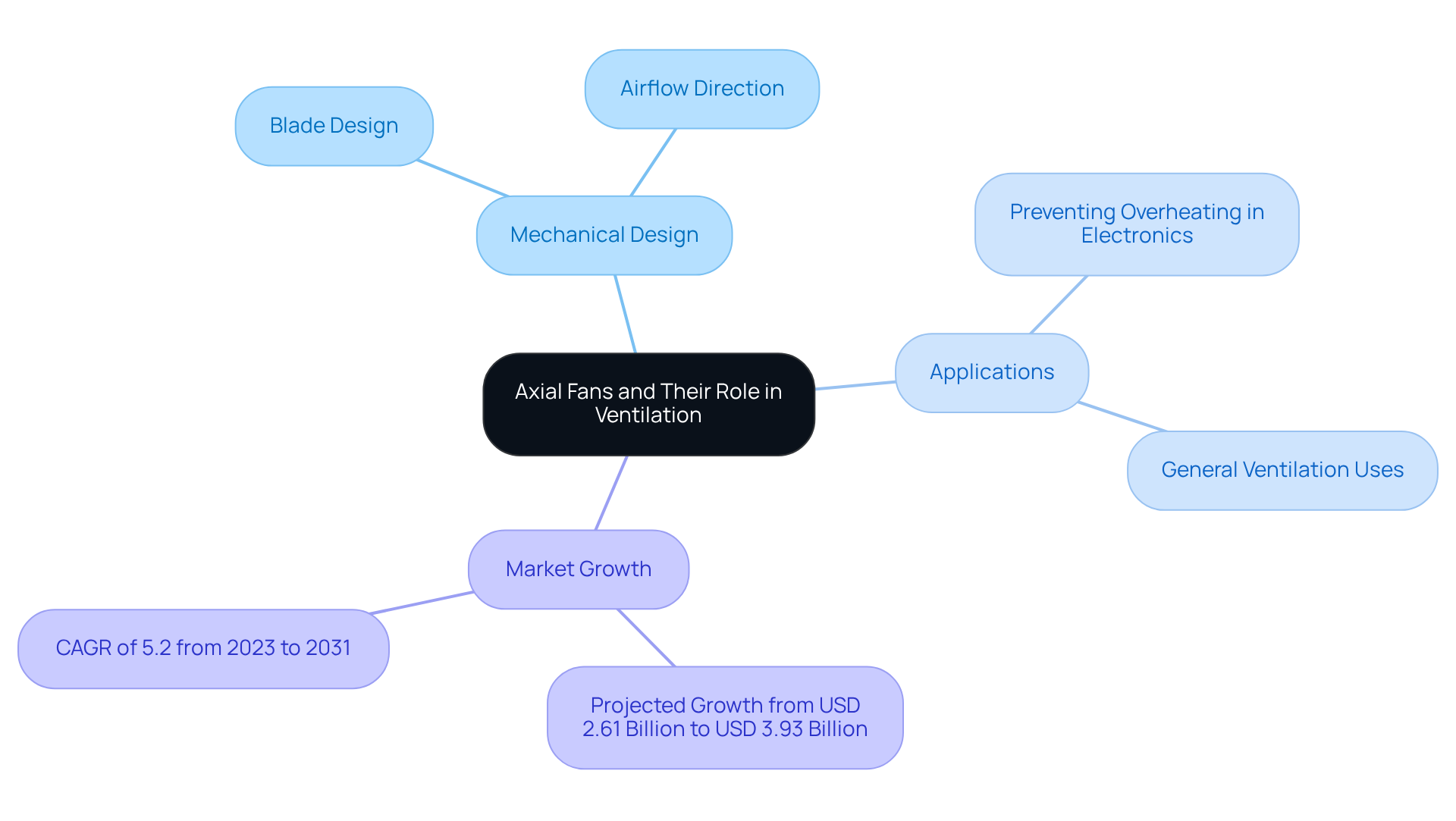
Explain the Importance of Axial Fans in Electronics Applications
In the electronics industry, an axial fan for ventilation is crucial in regulating the heat generated by components such as CPUs, GPUs, and power supplies. As devices become increasingly compact and powerful, their heat output rises, making efficient cooling solutions indispensable. An axial fan for ventilation enhances heat dissipation by promoting circulation across essential components, effectively preventing thermal throttling and potential damage. Their capacity to provide consistent air movement with an axial fan for ventilation is vital across various applications, from consumer electronics to industrial machinery, ensuring devices remain within safe temperature ranges.
Research indicates that the strategic placement of ventilators can significantly improve cooling efficiency by eliminating stagnant air pockets. Certain configurations have demonstrated up to a 20% reduction in energy consumption when utilizing FRP models compared to traditional metallic devices. Furthermore, case studies highlight the effectiveness of high airflow DC ventilation units specifically designed for data centers, where they are employed to maintain optimal operating conditions.
By facilitating effective thermal management, an axial fan for ventilation not only enhances device performance but also extends the lifespan of electronic components. This reduces risks associated with overheating and ensures reliability in operation.
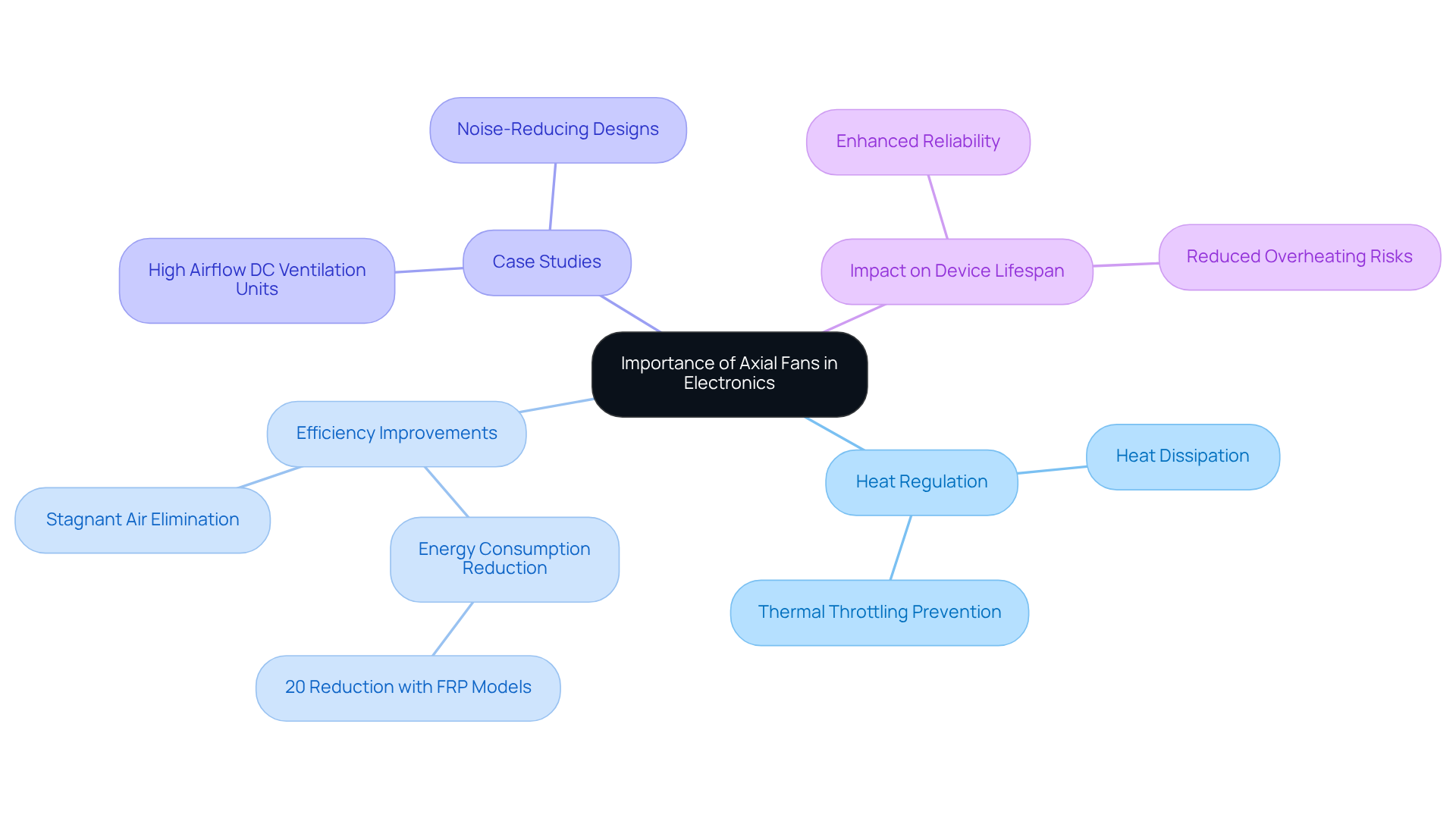
Detail Key Characteristics and Operational Principles of Axial Fans
Axial blowers are recognized for their capacity to move substantial volumes of air at relatively low pressure, establishing their importance across various applications, particularly in electronics. The operational principles of these devices hinge on their blade design, typically tilted to enhance circulation and minimize turbulence. Key factors influencing the efficiency of ducted blowers encompass:
- Blade shape
- Motor speed
- Diameter
A well-engineered fan, for example, can achieve optimal thermal efficiency by employing a blade arrangement that promotes air movement while minimizing energy consumption.
Incorporating control mechanisms such as Pulse Width Modulation (PWM) enables axial fans to modulate their speed and airflow in response to thermal demands, thereby enhancing their adaptability across diverse environments. This capability is particularly beneficial for cooling sensitive components, where precise temperature control is crucial.
Case studies underscore the importance of effective fan integration within equipment enclosures. For instance, strategically placing ventilation devices can eliminate airflow dead zones, ensuring consistent cooling and reliability of electrical systems. Furthermore, research indicates that tube blowers represent the most common type employed in industrial automation, underscoring their role in maintaining optimal operating temperatures and extending the lifespan of electronic devices.
Expert insights reinforce that the efficiency of these devices relies not only on their design but also on their operational context. Johann Tang, a Product Specialist, asserts, “Axial fans for ventilation excel at moving large volumes of air at low pressure in a straight line, making them ideal for general ventilation and cooling.” Selecting the appropriate type of blower and integrating it effectively can significantly influence product reliability and longevity, positioning these devices as essential components in modern electronics engineering.
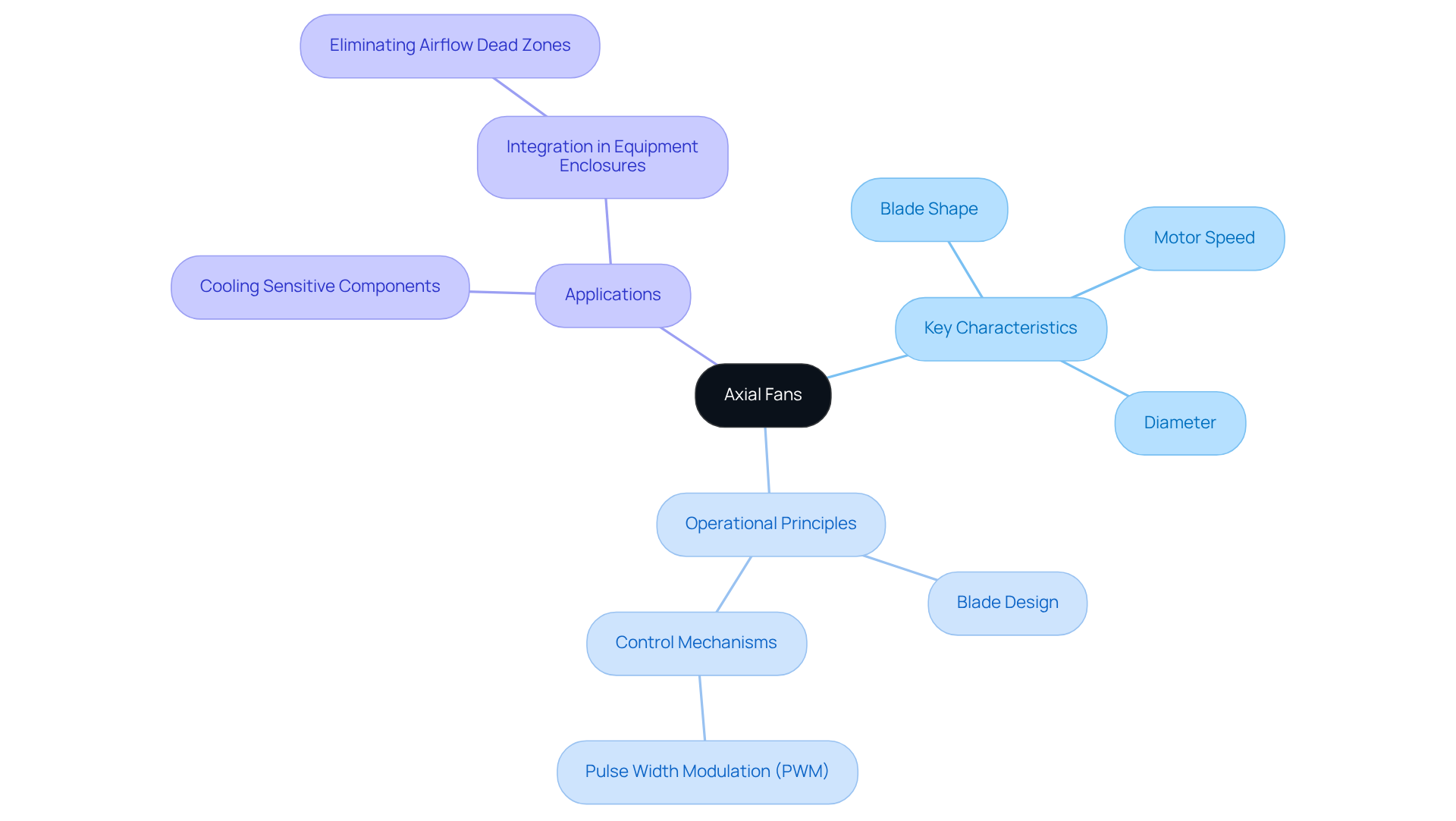
Provide Examples of Axial Fan Applications in Electronics
Axial blowers are crucial in a range of electronic applications, particularly within computer systems, where they efficiently cool CPUs and GPUs by drawing air through heatsinks. Maintaining CPU temperatures between 40°C and 75°C during regular computer use is essential, while GPUs perform optimally at temperatures of 85°C or lower during gaming to avert overheating.
In high-density computing environments, such as server farms, ventilators are vital for preserving ideal temperatures, preventing thermal throttling, and ensuring system reliability. Case studies indicate that gaming temperatures for CPUs should ideally remain between 70°C and 85°C, and under 85°C for GPUs, which is critical for achieving peak performance.
Moreover, in telecommunications equipment, an axial fan for ventilation cools essential components, thereby enhancing performance and prolonging device lifespan. Their adaptability is further illustrated in HVAC systems within commercial buildings, where an axial fan for ventilation plays a key role in regulating indoor air quality and temperature, underscoring their significance across various sectors.
It is also imperative to maintain cooling systems to mitigate dust accumulation, as dust functions as a thermal insulator, hindering airflow and diminishing cooling efficiency.
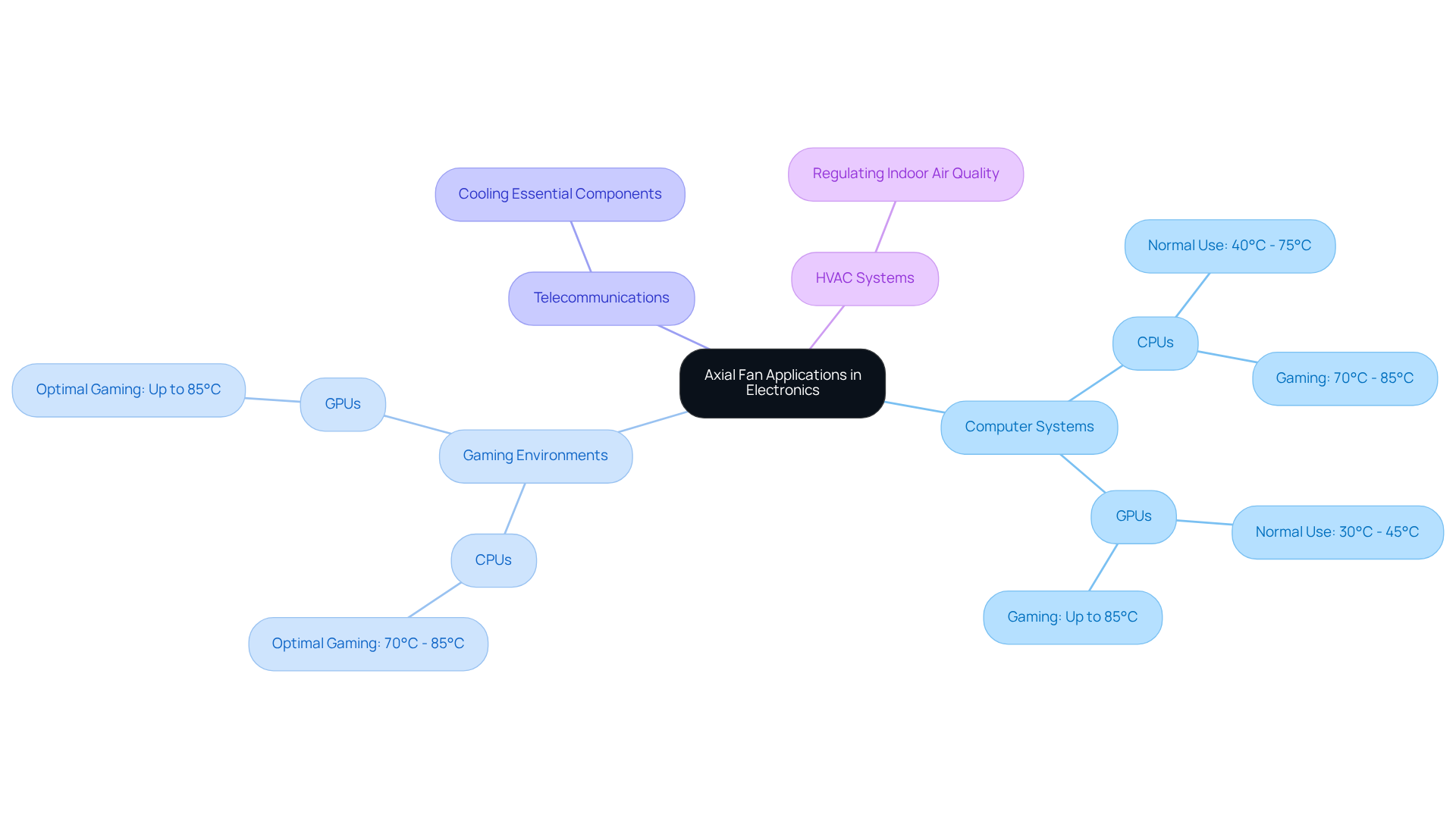
Conclusion
Axial fans are essential for achieving effective ventilation in the field of electronics engineering. Their design enables air movement parallel to the fan’s axis, which is crucial for maintaining optimal operating conditions for electronic components. By ensuring sufficient airflow, axial fans prevent overheating, thereby protecting the integrity and performance of vital devices in an increasingly demanding technological landscape.
This article has highlighted key insights into the operational principles and characteristics of axial fans. These devices are particularly effective in applications ranging from cooling CPUs and GPUs in computer systems to regulating temperatures in telecommunications and HVAC systems. The market for axial fans is anticipated to experience significant growth, underscoring their increasing importance in managing thermal dynamics across various electronic applications. Moreover, strategic placement and effective integration of these fans can lead to notable enhancements in cooling efficiency and energy consumption.
Understanding the significance of axial fans is imperative for anyone engaged in electronics design and engineering. As devices continue to advance and generate greater heat, investing in efficient cooling solutions becomes essential. By prioritizing the implementation of axial fans, professionals can improve device reliability, prolong component lifespan, and ultimately contribute to the creation of more robust and high-performing electronic systems. Embracing these technologies is not merely a choice; it is a necessity for the future of electronics engineering.
Frequently Asked Questions
What are axial fans and how do they work?
Axial fans are mechanical devices designed to move air or gas parallel to their axis. They consist of blades mounted on a rotating shaft that create a pressure difference, drawing air in and expelling it in a linear direction.
What is the primary function of axial fans in ventilation systems?
The primary function of axial fans in ventilation systems is to ensure adequate airflow, which is critical for preventing overheating of circuit elements and maintaining optimal operating conditions in electronic systems.
In what scenarios are axial fans particularly effective?
Axial fans are particularly effective in scenarios that require substantial air movement at low pressure, making them a preferred choice in various ventilation systems, especially in electronics engineering.
What is the projected market growth for directional blowers?
The market for directional blowers is projected to grow from USD 2.61 billion in 2023 to USD 3.93 billion by 2031, indicating an increasing importance of these devices in thermal regulation.
Why are efficient cooling methods, like axial fans, important for electronic systems?
Efficient cooling methods, such as axial fans, are vital for the durability and functionality of advanced electronic systems, especially as the demand for high-performance devices continues to rise.

